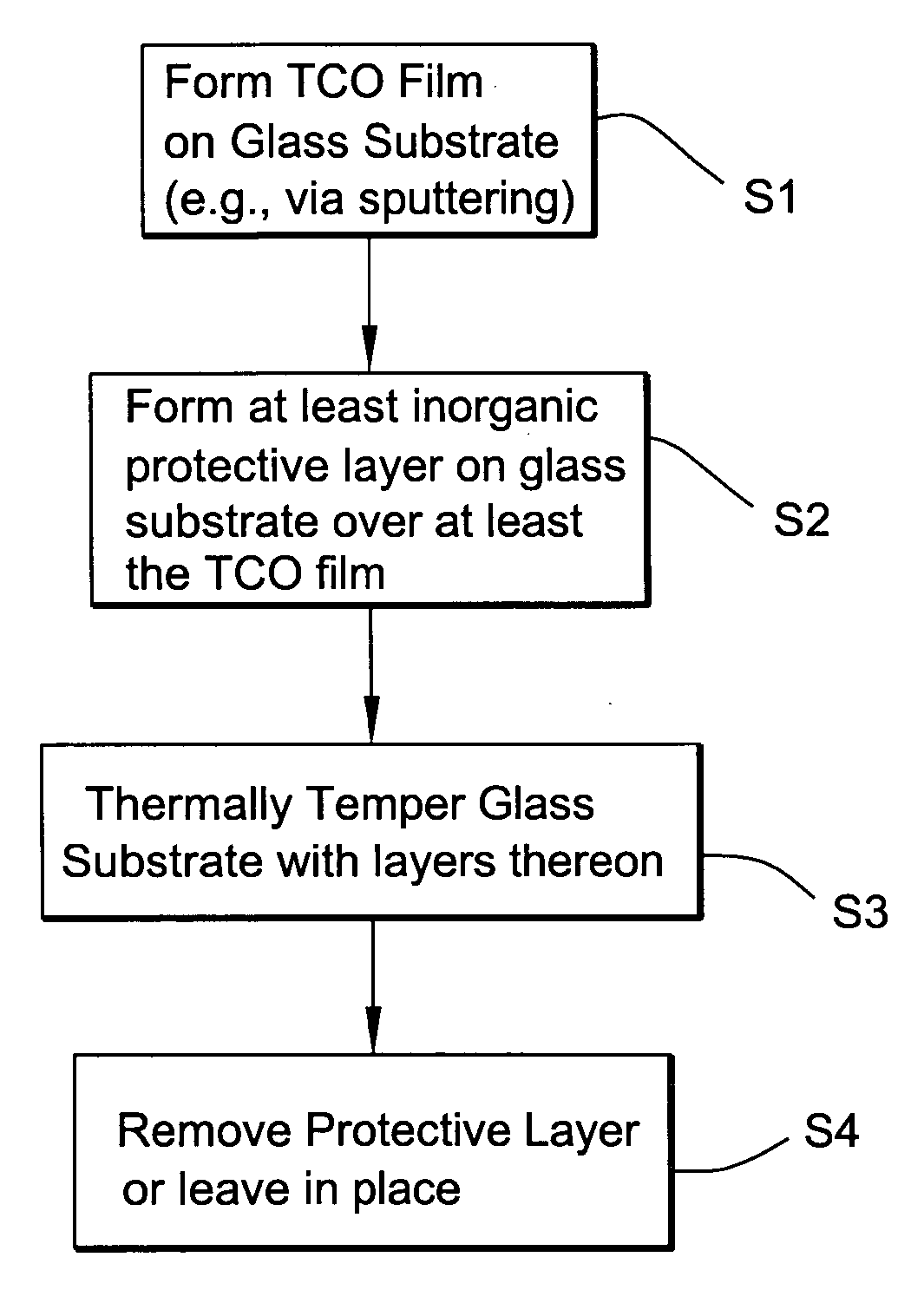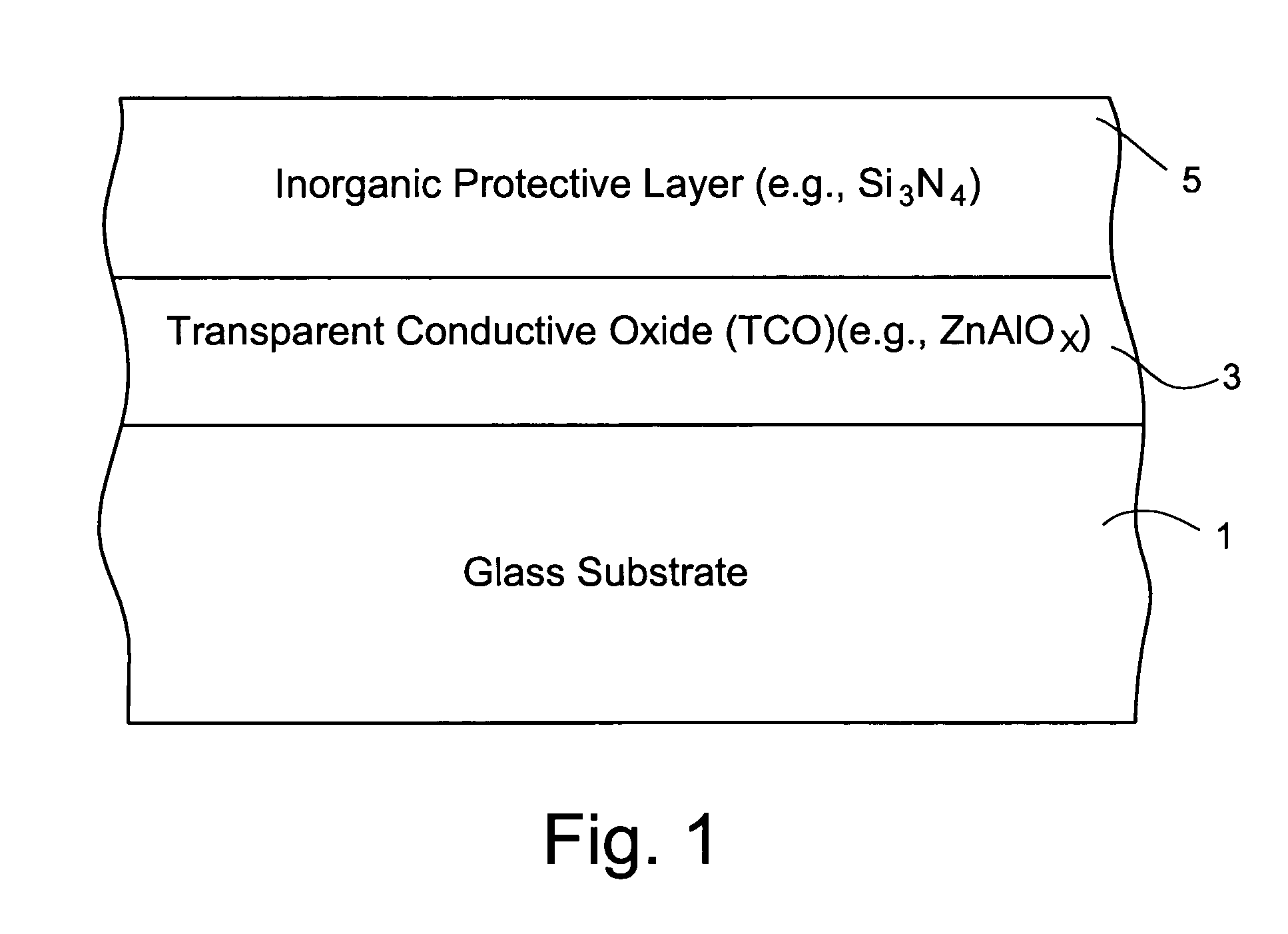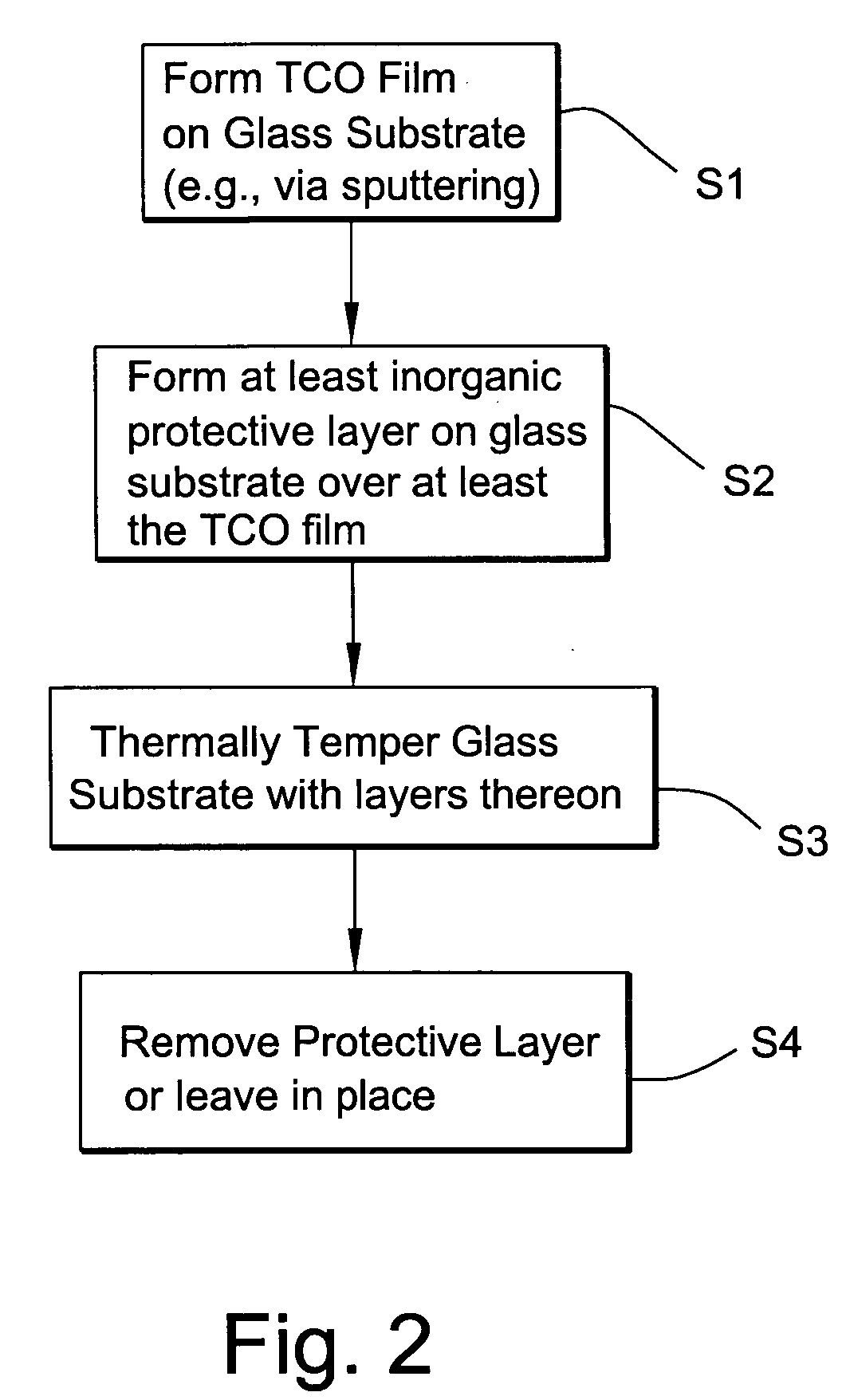Method of thermally tempering coated article with transparent conductive oxide (TCO) coating using inorganic protective layer during tempering and product made using same
a technology of conductive oxide and coating, applied in vacuum evaporation coating, coating, sputtering coating, etc., can solve the problems of inability to thermally temper coated articles with transparent conductive oxide (tco) coating, inability to heat temper coated articles, unpredictable and/or inconsistent with respect to certain optical and/or electrical properties, etc., to prevent or reduce oxidation of tco, and maintain the effect of electrical conductivity of tco coating
- Summary
- Abstract
- Description
- Claims
- Application Information
AI Technical Summary
Benefits of technology
Problems solved by technology
Method used
Image
Examples
Embodiment Construction
[0019] Coated articles including conductive layer(s) according to certain example non-limiting embodiments of this invention may be used in applications such as solar cells, oven doors, defrosting windows, display applications, or other types of windows in certain example instances. For example and without limitation, the transparent conductive layers discussed herein may be used as electrodes in solar cells, as heating layers in defrosting windows, as solar control layers in windows, electromagnetic radiation / wave shielding applications, and / or the like.
[0020] Sputter deposition of transparent conductive oxide (TCO) films has been of growing interest. For a number of products, temperable TCO-coated glass is required or desired. Commercially available temperable fluorine-doped tin oxide films produced by chemical pyrolysis suffer from non-uniformity. Additional potential advantages of sputtered films could also include the integration of anti-reflection coatings, resistivity reduct...
PUM
| Property | Measurement | Unit |
|---|---|---|
| sheet resistance | aaaaa | aaaaa |
| sheet resistance | aaaaa | aaaaa |
| sheet resistance | aaaaa | aaaaa |
Abstract
Description
Claims
Application Information
 Login to View More
Login to View More - R&D
- Intellectual Property
- Life Sciences
- Materials
- Tech Scout
- Unparalleled Data Quality
- Higher Quality Content
- 60% Fewer Hallucinations
Browse by: Latest US Patents, China's latest patents, Technical Efficacy Thesaurus, Application Domain, Technology Topic, Popular Technical Reports.
© 2025 PatSnap. All rights reserved.Legal|Privacy policy|Modern Slavery Act Transparency Statement|Sitemap|About US| Contact US: help@patsnap.com



